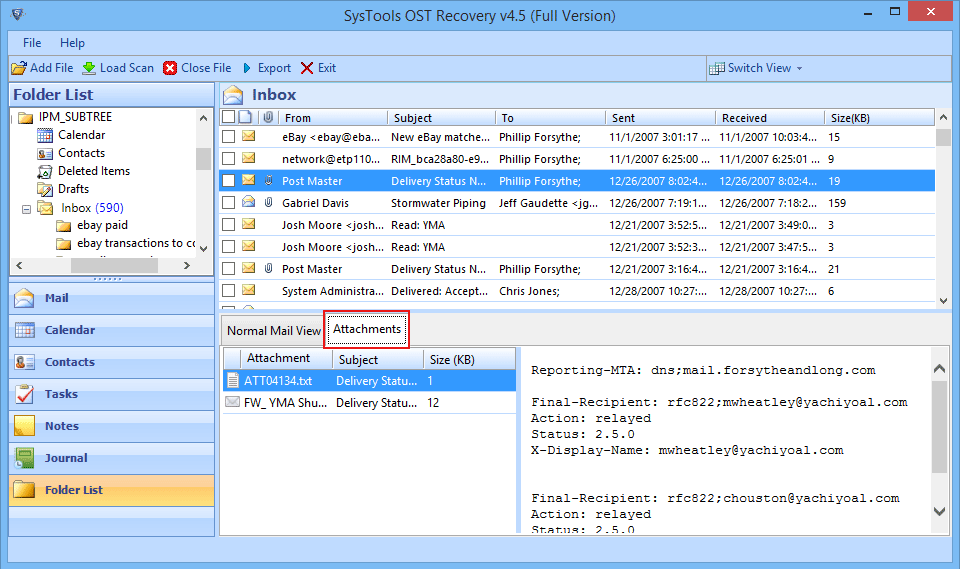Example Ost File
- I need to recover the contents of an OST file from Outlook 2003. I don't need to do this so badly that I'm willing to pay the hundreds of dollars some companies charge for recovery utilities; I'm more interested in doing this from the intellectual challenge side of things.
- About Outlook Data Files (.pst and.ost) When you run Outlook for the first time, the necessary data files are created automatically. Sometimes additional data files are needed. For example, older messages and items that you don't use regularly can be archived to an Outlook Data File (.pst).
Examples Os Files

If you're using an Exchange email account, you can delete the offline Outlook Data File (.ost) and Outlook will recreate the offline Outlook Data File (.ost) the next time you open Outlook. Browse to the folder where the.pst file is stored and you'll find the.bak file (for example, kerimills01@outlook.com.bak) created by the Inbox Repair.
When disaster occurs on Microsoft Exchange server, such as server crashes, server database corruption, etc., the Exchange offline folder (.ost) files on the client computer still contain the mail messages and all other items of your Exchange mail account. You can use DataNumen Exchange Recovery to scan the OST files, recover data, and save them into PST files that can be opened by Microsoft Outlook. Moreover, when you encounter, such as data corruption, etc., you can always use DataNumen Exchange Recovery to recover data from it. Note: Before starting the recovery process, you may try the first. Step 1 Start DataNumen Exchange Recovery. Note: Before recovering the OST file with DataNumen Exchange Recovery, please close any other applications that may access or modify the OST file. Also please close Microsoft Outlook.


Step 2 Select the OST file to be recovered: You can input the OST file name directly or click the button to browse and select the file. You may also click the button to find the OST file to be recovered on the local computer.
Step 3 DataNumen Exchange Recovery will save the recovered data as a new file in Outlook PST format so that you can use Microsoft Outlook to open and see the recovered objects. And by default, the new file name is xxxxrecovered.pst, where xxxx is the name of the source OST file. For example, for source OST file Source.ost, the default recovered file will be Sourcerecovered.pst. If you want to use another name, then please select or set it accordingly: You can input the recovered file name directly or click the button to browse and select the recovered file.
Step 4 Click the button, and DataNumen Exchange Recovery will start scanning and recovering data from the source OST file. Progress bar will indicate the recovery progress. After the recovery process, if any data can be recovered successfully, you will see a message box like this: Step 5 Now you can open the recovered PST file with Microsoft Outlook and see the recovered objects.
Please note DataNumen Exchange Recovery will try to put the recovered objects in their original folders. However, for the lost & found objects, they will be put in folders like RecoveredGroup1, RecoveredGroup2, etc. Note: The demo version will display the following message box to show the success of the recovery: Then you can open the recovered PST file with Microsoft Outlook. However, for each recovered message, its contents will be replaced with the following demo information: To get the actual recovered contents, please. Copyright © 2018 DataNumen, Inc.
All rights reserved.
Comments are closed.